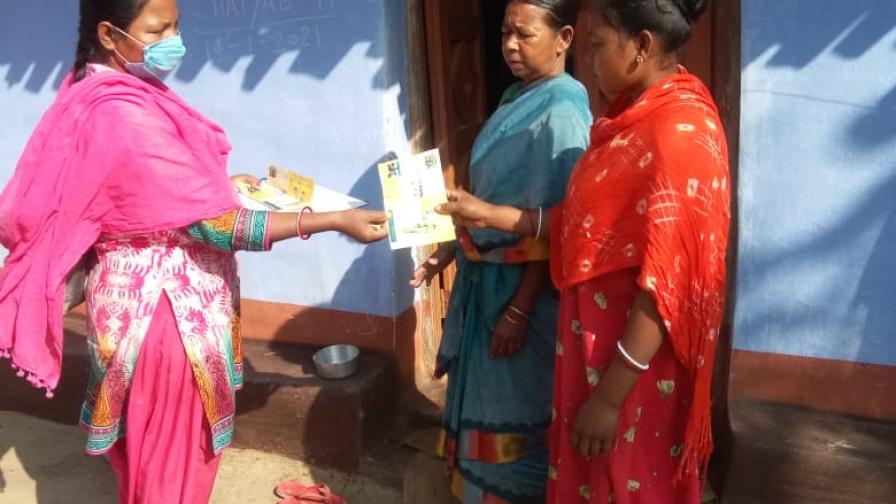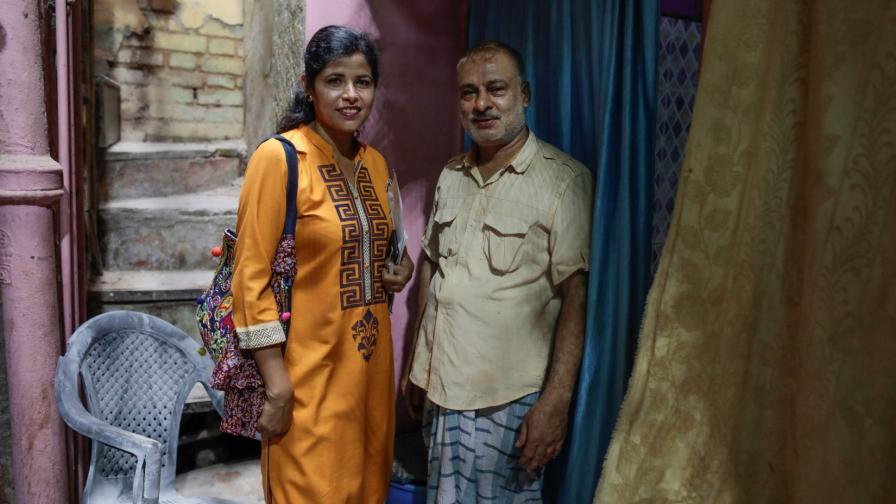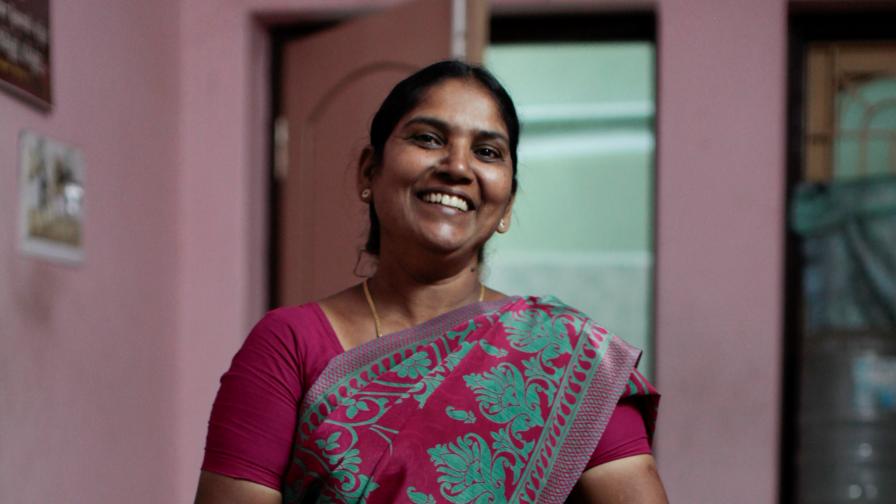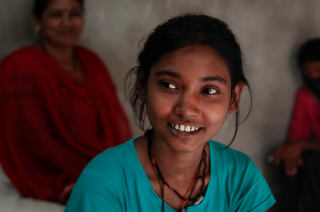Project Axshya Plus, supported by the Global Fund to Fight AIDS, Tuberculosis and Malaria, successfully implemented innovative approaches at scale, focused primarily on household contacts of people with pulmonary TB, both bacteriologically and clinically confirmed.
Delivered to enhance National TB Programme efforts, the project rolled out across seven states and 108 districts, reaching an estimated 202 million people.
The three-year project generated many important learnings and achievements, which guided the National TB Elimination Programme (NTEP) to revise existing guidelines and develop some new standards for TB preventive treatment (TPT).
Dr Bharati Kalottee, Project Director, explained: “The management of TPT within the healthcare system is both achievable and scalable with efficient planning, cost-effective diagnostic tools, shorter treatment regimens, health system strengthening, and active community engagement.
“It is vital to leverage newer tools, like portable chest X-rays and skin TB tests, and updated WHO guidelines to end TB.”
The project was delivered in collaboration with Catholic Health Association of India and German Leprosy and TB Relief Association India.
The overall objectives were to:
- Demonstrate implementation models, generate evidence, and scale-up programmatic management of TPT.
- Build sustainable community systems through community engagement, advocacy and communication for TB prevention and care.
- Generate evidence through Operational Research to inform policy decisions and future actions.
Implementation approach
The three-year project adopted two distinct approaches:
- Test and Treat Model: This involved symptom screening, diagnostic testing for TB infection, administration of preventive treatment, and follow-up services.
- Treat Only Model: This included symptom screening, preventive treatment, and follow-up services without additional diagnostic tests for TB infection.
Key outcomes
The project achieved significant results over the three-year period, including:
- Over 1.5 million household contacts of people with TB were identified
- With 81% (1,225,859) screened for symptoms
- 18,832 IGRA tests (blood tests) facilitated
- 26,166 screened with chest X-rays
- Over 700,000 household contacts were initiated on TPT, with 81% overall completion rate:
- 91% and 92% for the two three-month regimens (3HP and 3HR)
- 86% for the six-month regimen (6H)
- 12,839 chest symptomatic people were identified during screening, with 686 people diagnosed with TB, demonstrating the project's dual benefit of prevention and disease detection
The success of the project was not only quantitative, but also the quality of implementation with massive coverage and scale up due to dynamic strategic changes and support from across the health system.
Key learnings and developments
- Programme preparedness: Adequate human resources, logistics, drug availability and diagnostic facilities are essential to manage the increase in demand for TPT services.
- Effective counselling: Counselling is the key to initiate the first step of the care journey. It was learnt that counselling is most effective when done in the first month of treatment of people with TB.
- Screening and active case finding: These interventions go hand in hand when reaching out to household contacts. The NTEP has rolled out the new guidelines for active screening of TB and prevention.
- Doorstep delivery of testing: This delivery model for testing was largely accepted by families, reduced access barriers and improved uptake of TPT.
- Using the right diagnostic test: IGRA testing minimised overtreatment. This reduced the resources required to roll out and scale up implementation in terms of the number of people initiated on TPT.
- Community engagement: Leveraging community platforms, like village health committees, significantly improved adherence and treatment completion.
- Health system strengthening was the key to success: The project saw a huge loss of household contacts for testing and treatment initiation, due to their long distances from health facilities. To combat this the project staff strengthened engagement and training of community health officers. This was a major turning point for the project that helped address dropouts at each step of care journey.
- Shorter treatment regimens: The three-month regimens had better outcomes (91%) than 6H regimen (86%), as well as higher acceptance. From these learnings, shorter regimen (3HP) has been procured and rolled out across the entire country.
- Adverse drug reaction management: Adverse drug reactions were the major cause of people stopping treatment. It was learnt that managing adverse events effectively is critical to maintaining adherence, as one drop out can influence an entire household.
- Major dropouts occur at the first month of treatment: Visiting household contacts at least twice during the first month of treatment improved adherence.
- Private sector engagement for TPT uptake is a major gap: Only 17% of eligible contacts of people with TB were initiated on TPT through the private sector.
- Take advantage of new tools: Chest x-rays are an important tool for ruling out active TB and increasing uptake by building confidence – 50% of contacts screened with chest x-rays were found to possibly have, with 2% of these diagnosed with TB. These findings have informed the NTEP’s revision of the diagnostic algorithm for TPT by making CXR screening mandatory.

Agastina Bahanda is a dedicated community volunteer, in Goilkera of West Singhbhum, Jharkhand.
Initially due to COVID-19, she faced resistance from her family to undertake field activities and did not work from March to June 2020. As information became clear and mobility restrictions were minimised, she resumed work and adapted quickly to new norms.
In the community, she faced many challenges such as people not allowing her into villages or refusing to let her make a mark on their wall due to fear of stigmatisation. They also refused to give sputum as they had fear about what their samples would be tested for, but she help clear their doubts and fears. She engaged with the Sahiyas and Mundas (the village heads) and with their support continued her good work in the villages.
Her indomitable spirit became an inspiration for people in the community and two young men came forward to join the Project Axshya as volunteers. Agastina's achievements in 2020 include:
- 44,028 population covered
- 7,782 households covered
- 242 sputum collection and transportation completed
- 38 TB positive in all forms (bacteriological and clinically)

Worked in tandem with the Revised National TB Control Programme (RNTCP), Project Axshya (meaning free of TB), reached key affected populations, enhanced community ownership and created demand for quality services for TB control amongst communities who have the greatest difficulty in accessing TB diagnosis and treatment.
The Union’s Project Axshya was launched in April 2010, and was financed by the Global Fund.
The project was guided by these principles:
- Universal access to quality TB services
- Community participation in TB care and control
- Sustainable interventions and equitable distribution of project benefits, especially amongst marginalised populations based upon social norms and gender-based discrimination
Initiatives taken under the project
- Active Case Finding
An innovative intervention to increase awareness and case detection amongst vulnerable and marginalised populations residing in areas with poor access to health services. This was done through trained community volunteers, who conducted home visits to make the community aware of TB symptoms, identifying the chest symptoms and linking them for diagnosis and treatment.
The intervention informed policy change by the NTEP for finding the “missing cases”.
Impact: Over 5.8 million households covered
- District Hospital Intervention
An intervention to fast track people attending the Outpatient Department in high-load settings. A community volunteer was placed at the Outpatient Department who would accompany people with potential symptoms to a Designated Microscopy Centre for smear examination. This supported early detection as well as minimises transmission of disease to the other attendees in Outpatient Department.
Impact: 139 District Hospitals covered
- Active Community Surveillance
Active community surveillance of the vulnerable population through the community volunteers led to continuous monitoring and screening of contacts of people with TB and linking them to diagnostic and treatment services.
Impact: Over 2,100 active community surveillance units established
- Health Camp
The health camps were organised with the support of the District National TB Elimination Programme team. Conducted in the identified key affected populations and congregated settings to screen TB symptoms and get the identified chest symptoms linked with Designated Microscopy Centre for early diagnosis of TB.
Impact: 3,164 health camps organised
- Empowering people with TB
Aimed to empower people with TB on their rights and responsibilities through the Patient Charter.
Impact: 24,447 people with TB sensitised on their rights and responsibilities

Jamuna, 55, lives a normal life after being cured of TB. She was photographed in her home in Chennai during a visit from staff partnering with The Union’s Project Axshya. India has the highest number of people with TB in the world, accounting for 25 percent of the global burden. The Union’s Project Axshya works in partnership with seven sub-recipient partners, a local network of NGOs and more than 15,000 volunteers to provide innovative TB interventions designed to serve traditionally hard-toreach and at-risk populations.

